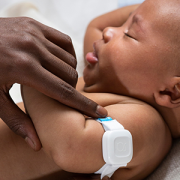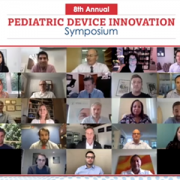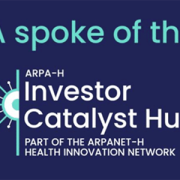Supporting breakthroughs in at-home pediatric monitoring
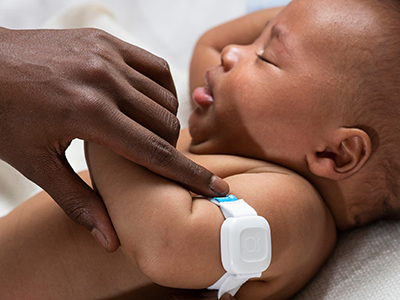
The child-sized, lightweight, wearable band enables at-home monitoring of patient vital signs.
As their infant daughter recovered from a life-threatening virus, tech executive Jonathan Baut and his wife lived in a constant state of alert for any signs of a change in her condition. That experience prompted Baut to look for an at-home vital signs monitoring solution for parents facing medical challenges at home.
He located the technology in Belgium and found the clinical support to advance the innovation at Children’s National Hospital, tapping into its leadership of a pediatric device consortium funded by the Food and Drug Administration (FDA), the Alliance for Pediatric Device Innovation (APDI).
The technology platform, called Gabi SmartCare, features a tiny, lightweight, wearable band made for children that enables at-home monitoring of a patient’s vital signs including oxygen saturation, and heart rate movement. It also supports the collection of other data about health conditions through health assessment.
The big picture
Wireless home-based monitoring could reduce hospital stays while improving the transitional care provided to patients at home. It could also aid in the home care of chronically ill patients.
Recently, Gabi SmartCare received its FDA clearance as a class II device for monitoring use. Baut says the multifaceted support he received from Children’s National and APDI helped him achieve this critical milestone, including the hospital’s role as one of two U.S. clinical trial sites for the device.
He explained that the APDI team also connected him with experts in device trials, regulatory processes and reimbursement, which helped him better understand the U.S. market and the nuances of the pediatric continuum of care.
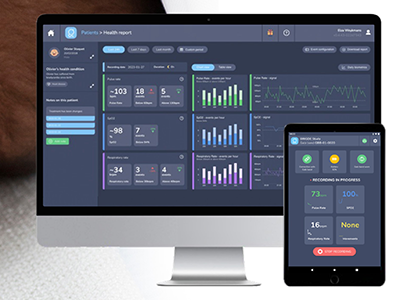
Physicians can remotely monitor patient’s oxygen saturation and heart rate movement.
As he focuses on getting his product into hospitals, Baut already has additional monitoring features in development for Gabi SmartCare including respiratory rate, actigraphy, skin auto-calibration and sleep phases.
Why it matters
Reliable at-home monitoring tools can expand a pediatric hospital’s capabilities to support patients beyond the hospital setting. They can also help reduce trips to the emergency room and reduce the stress and anxiety parents experience when providing home care. Helping to advance devices like these can deliver those benefits to patient families at Children’s National and beyond.
“The pandemic underscored a great need for technologies that improve remote monitoring for children,” said Kolaleh Eskandanian, Ph.D. M.B.A., P.M.P., Children’s National vice president and chief innovation officer and program director of APDI. “At-home monitoring devices enable remote and continuous surveillance of pediatric patients, ensuring timely intervention and optimal care delivery even in remote or resource-limited settings. These technologies are needed now, and even more during public health emergencies.”

